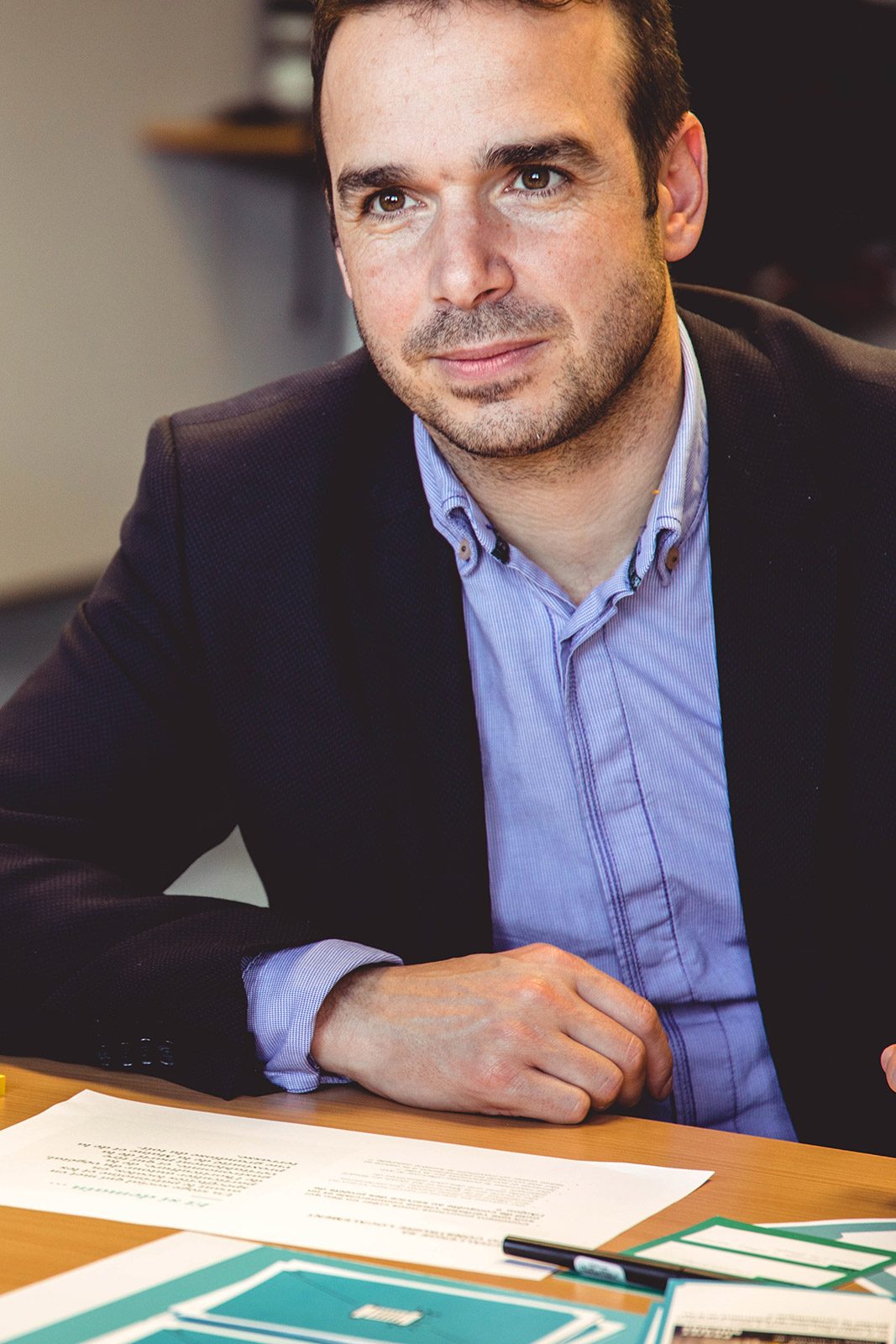The importance of an effective website brief
- Read time: 6 mins
- Tech level: low
- Key point: having a thorough brief sets your website project up for success
- Resource: Create your new brief in minutes with this brief generator.

The work delivered by your website agency will only be as good as the brief, so we will take you through the best way to brief your agency, and in turn get the best outcome for you and your organisation.
To streamline the process of briefing an agency to build your website, we've created an online brief building generator.
You will save you both time and money, by building an effective website brief. An effective brief will improve communication and reduce opportunities for misunderstanding.
You can benefit from a thorough website briefing document by:
- you'll save time (in the long run).
- avoid miscommunications, and
- you'll ensure that your expectations are met when your website is delivered to you by your agency.
Examples of website briefs
A website project is a bit like a road trip
You wouldn't go on a long road trip before planning your route or using your GPS. You could just hit the accelerator without planning, but without planning your road trip - it will likely be bumpy ride for everyone involved. You may end up taking detours or going in directions that other people weren't expecting.
Step 1: Get buy-in from the top

Having a common goal will boost team efficiency.
Before you invest a lot of time and effort in building your brief, ensure you have the relevant internal buy-in from the top.
Building a brief and getting cost estimates can be a lengthy and time-consuming process. There can be significant effort involved and a lot of meetings and documentation writing. While we have tried to streamline this process for you, there's still significant work involved in building a thorough brief.
Your project will run a lot smoother and be more successful if everybody is on-board from the start. Typically, you'll need to convince whoever's at the head of the organisation first because there's not much point in investing all that time if your internal stakeholders aren't convinced about the merits of this project.
Once you've convinced them about the necessity of your project, then that usually cascades down throughout the organisation. But, if the head of your organisation is not going to support you adequately in this project, then that'll make the project either impossible or very difficult.
Before you spend too much time and effort or money in building your brief, get internal buy-in.
Step 2: Personas

Document your ideal or target audience. This means, if you haven't already, documenting who your ideal website visitors are. It doesn't have to be a stereotypical public relations profile of someone who's married, 36 year-old soccer mum.
Instead, it's more important to establish the key drivers of this persona:
- What are their wants to needs or motivations?
- Can your product help them achieve their goals or ambitions?
- What is the major fear that’s stopping them engage with you?
- What are their interests?
- Why are they coming to your website in the first place?
- What problem are they trying to solve?
- How will your product or service help them achieve their goals?
- What usually stops them from engaging you?
Examples of personas
 'Buyer persona for a new car shopper' persona, Bradley
'Buyer persona for a new car shopper' persona, BradleyView this customer persona example to help increase sales and make your marketing more relevant to your customers.
 'The environmentally conscious buyer' persona, Sarah
'The environmentally conscious buyer' persona, SarahIncrease online sales with this customer persona example for the environmentally conscious buyer. Make it easier for people to buy from you.
 'The buyer / online shopper' persona, Sandra
'The buyer / online shopper' persona, SandraSave time and money by starting with this buyer persona template for a retail website, Sandra.
 'The recently divorced' persona, Martha
'The recently divorced' persona, MarthaSave time and money by starting with this persona template for a financial services website, Martha.
 'The adult expecting an inheritance' persona, Jason
'The adult expecting an inheritance' persona, JasonSave time and money by starting with this persona template for a financial services website, Jason.
More about personas
There are many benefits to creating personas. Learn more about personas and how they can help you target your messages.
Our online brief builder generator has a series of questions that you can just fill out and it will create a basic version of a persona for you.
Ideally you would have well designed documents that would include a person's name and photo that would help bring the persona to life. These documents could then be put up around the office to remind people who the ideal audience is.
Step 3: Establish and agree on your business objectives
Framing the project within the context of your overarching business goals is critical
You typically wouldn't build a website just for the sake of building a website. You're building a website to achieve something, for example, to improve your reputation and or to increase sales.
Other common reasons include to:
- improve your brand,
- improve the volume and quality of visitors and enquiries,
- streamline a process, or
- reduce front-line costs by making customer support a self-service process (rather than customers ringing and emailing unnecessarily).
There are a number of reasons why you would want to invest in a new website. Fleshing these reasons out in your brief, will help all who are working on your project become more aware of the context of this project.
Make it clear how your new website should impact on your overall or overarching business goals or strategy.
If your organisation has an overarching strategy - link the goals of your project to it.
Step 4: Decide on measurable goals

It's difficult (or impossible) to establish if there's been an improvement if there's no measurement.
This is where it gets a little more specific from overarching business objectives.
Tracking
Your measurable goals need to be metrics you're already tracking - so that the results of changes can be measured. Set up tracking now if you haven't done already.
Measurable goals could be:
- you currently get 50 people a month enquiring about your product / service / offering, and you want to increase that to 70 people a month, and or
- your website is generating $X in revenue per month and you want to increase that to $Y in revenue per month, and or
- you might be using the net promoter score.
Need a website health check?
Ask us for a high level review of your current website:
- we’ll review your site
- we'll send you a report, and
- you can then choose the items you’d like to add to your brief.
Step 5: work out your timelines and to establish realistic milestones
People generally work better when they've got a deadline.
Laying out dates for when key events need to be done by, will help work out what you can and can't do within certain time frames.
If you've got a very hard deadline that's very short, then break your project up into digestible chunks.
Your project could be broken up into prioritised phases, then you'd iteratively launch them.
- Phase one could be just launching a new website that has a new design and only has the critical features and functionality. In this digital world this is called the minimum viable product.
- Phase two could be launching a number of tools.
- Phase three could be extending or expanding on, the functionality of the website.
- Phase four could be focusing on marketing efforts etc.
Your project doesn't have to be a waterfall type of project. Having goals to work towards will help everyone plus it will give everyone fair warning that these are the timelines that you're expecting to have work delivered by and making sure everyone's clear and understands that.
Step 6: Establish a realistic budget and get internal approval

You don't necessarily have to put this in the brief and you don't even have to disclose it to the potential vendor. Getting the budget approval process done, or at least started, before you start briefing website agencies, will save everyone valuable time.
You don't want to brief a website agency, then wait a month or two for internal approvals. A range of other events could have happened within that timeframe. That agency may no longer have capacity, or (understandably) they may have forgotten the particulars of that meeting from months ago.
Step 7. Future-proof your new website
Plan for your current situation but also think about what may happen in the near future.
Set yourself up for future success. Obviously, no one can see the future but there are certain steps you can take during a due diligence process:
- you can ensure that the CMS technology you're investing in has a realistic future: ensure the CMS is not about to go out of business or be acquired by a larger company.
- review the roadmap for your preferred CMS
-
- see what their future plans are and make sure that they align with what you'll need over the next few years
- look at the CMS forums and see how active the community is
-
- are there a number of helpful replies to support questions or can you hear crickets?
If you're leaving the CMS decision to your agency, then it's even more important that you brief them well. Ensure you make it clear what features or functionality your website will need want in the near future - so that they pick the suitable technology for your situation.
Step 8: Ensure you align well with your preferred agency

Do your due diligence on the agency you're planning on engaging with. Make sure your preferred agency is the right size and the right fit for you. If the agency is very large and your job is considered very small, then you may get pushed to the end of the line in terms of service. Alternatively, if they're too small in relation to your organisation, they may not be able to handle the size and complexity of your project and there's a risk that they'll go out of business.
Website brief generator
You can have the building blocks of a brief created in minutes without having to spend hours.
If you need help writing your brief, we've got you covered with our brief generator that will guide you through each step of the process. After spending just a few minutes, you'll have the basis of your new website brief. The brief generator will help you build the scaffolding or the basic building blocks of your website brief.
Wrap up
Creating an effective website brief will:
- make the project more productive for you,
- save you time and costs, and
- help to build a better and longer lasting relationship with your agency.
You can save significant time and effort by using a brief generator instead of starting with a blank page.
More about building a new website
Got any questions about building a large enterprise-sized website? Feel free to get in touch.
Hopefully, you've found this article useful and good luck in your website project.

